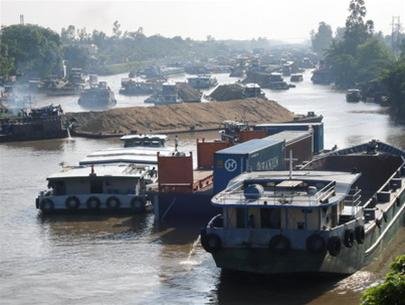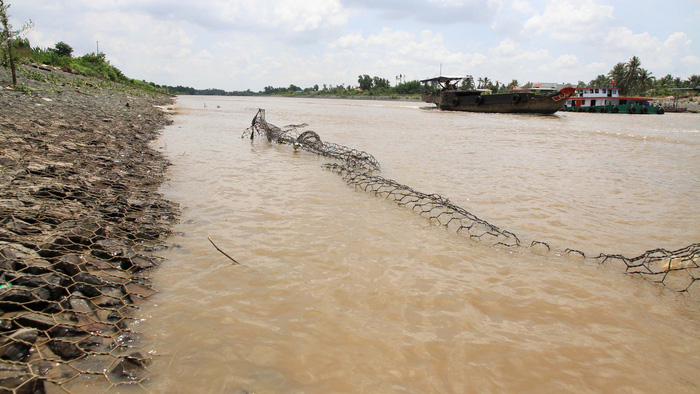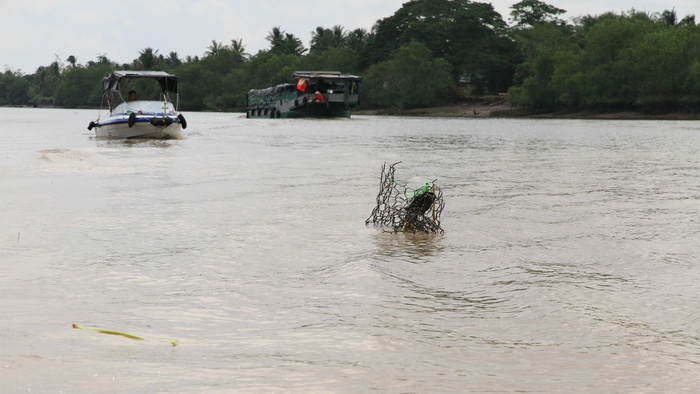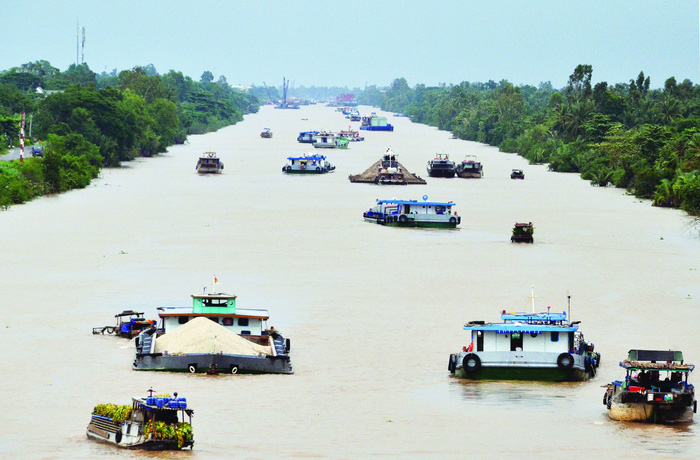Traffic along an arterial inland waterway in the Mekong Delta in southern Vietnam has been frequently snarled due to the route’s shallow water, despite its VND786 billion (US$35 million) worth of makeover several years ago.
The Cho Gao Canal, stretching around 29 kilometers across Tien Giang Province, constitutes the sole waterway for transporting rice and other types of produce from the Mekong Delta provinces to Ho Chi Minh City.
It was dredged and expanded by the Vietnamese administration between 2013 and 2014 to facilitate traffic, with embankments installed to prevent erosion as the first stage of a construction development project.
Built by the French in 1877, the dredging project won an award for high-quality constructions in 2016, but congestion has quite often occurred as about 1,100 vessels navigate it on a daily basis, according to figures from Tien Giang waterway police.
Boats and ships cannot travel along the waterway during one third of the day, when the tide is low.
This means when the tide is high, a number of vessels will flock the canal, many of which would subsequently come into collision or be pushed towards the bank by massive waves created by larger ships. Others may become grounded in an effort to sail rapidly when water is rising.
Barges carrying large loads of over 2,000 metric tons are forced to stay at the end of the canal awaiting high tides, according to a captain.
 |
| Vessels crowd the Cho Gao Canal in Tien Giang Province, southern Vietnam. Photo: Tuoi Tre |
The total daily waiting time of such a barge is about six to eight hours, which leads to reduction in revenues and profits of private entities having cargoes conveyed on the ship along the Cho Gao canal, said Tran Do Liem, chairman of the Vietnam Inland Waterway Association.
A common sight of the route is dislodged iron nets originally used to protect its embankments, now lying in the way of incoming ships.
Tran Duc Hai, deputy director of the Vietnam Inland Waterway Administration, confirmed the Cho Gao Canal’s multiple revetment structures have been ruined.
The dilapidation, he said, was due to the fact that boats crashed into the embankments or anchored close to the structures.
 |
| Dislodged embankment iron nets lie in the Cho Gao Canal in Tien Giang Province, southern Vietnam. Photo: Tuoi Tre |
 |
| A twisted iron net is seen in the foreground along the Cho Gao Canal in Tien Giang Province, southern Vietnam. Photo: Tuoi Tre |
The constructions are meant to be maintained once a month, but authorities in Tien Giang Province have failed to do the repair work ever since they have been tasked with the job, due to local budget constraints, Hai underlined.
Lack of money, he said, explains why the Cho Gao Canal can only serve 600-ton ships any time of the day while vessels of more than 1,000 tons sail on the rising tide to save fuel costs.
Any accommodation of travel of ships over 2,000 metric tons necessitates an enormous outlay to expand the canal, Hai said.
“The problem ships on the Cho Gao Canal are facing is not that the waterway is not deep enough, but that the width of its bed has not been increased.”
He added that ships of more than 1,000 metric tons can travel along the canal when the tide is high, if the construction project for the route passes its second phase, which costs VND1,400 billion ($62 million).
Like us on Facebook or follow us on Twitter to get the latest news about Vietnam!


















































